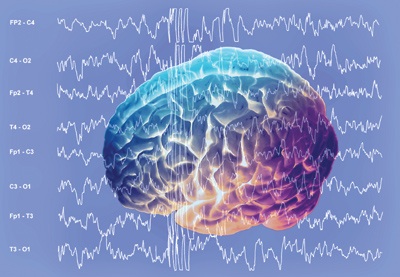
Brain wave measurement picks apart how people respond to ads
April 29, 2008 by Dave Haynes

The Ad Lab blog has a piece flagging articles in MediaPost and the New York Times about something called neuromarketing — using the measurement of brain waves, skin response, eye movements and pulse rates to get a fix on how people are responding to advertising messages.
The articles look at companies like NeuroFocus and EmSense and how they apply biometric science to stdying the efficacy of ads.
Winners of Effies “tend to be a little less emotional and use rational claims a bit more” than winners at
Cannes, Ms. Moses (EmSense) said, and ads that won Lions tended to be much better liked than their Effie counterparts, reports the NY Times.
But surprisingly, “there are very important similarities” between the two types of winners, she added, whichcan help guide future campaigns.
Fifteen of the 19 Cannes and Effie winners engaged consumers faster than average spots, Ms. Moses said.
“Typically, a spot engages with viewers in 5 to 7 seconds. The Cannes and Effie ads engaged, whether emotionally or cognitively, in 1.5 seconds.”
Whichever award the commercials won, they had an equal effect on purchase consideration and on brand
favorability, Ms. Moses said.
This is relevant because of the very limited time spots running on screen networks have to make an impact with viewers.
Meanwhile, the MediaPost piece looks all the way into how ad layouts and screen designs are done. The thinking involves Web site, but most or all of the thinking translates into our space.
Switching a brand logo on a Web site from the right-hand side of the page to the left can have a profound impact on the way that image is processed by consumers and could ultimately give one advertiser an advantage over another, according to new research from NeuroFocus.
The Berkeley, Calif.-based neuromarketing research firm has compiled a list of more than 65 best practices aimed at helping marketers develop visual ads that are more effective and engaging. The insights arose from a series of studies conducted from the summer of 2006 through the fall of 2007 at NeuroFocus’ labs in Berkeley, New York and Chicago.
Using eye-tracking studies, galvanic skin response (GSR) data, as well as the info from sensors placed on the test subjects’ scalps (called electroencephalography, or EEG), NeuroFocus gauged the impact of variables such as the placement of images versus the placement of text, the use of motion and animation, and even ad models like pop-ups and puzzles. The company also tested consumers’ reactions to the stimuli on screens of varying sizes, including 40-inch plasma monitors, 17-inch computer screens, portable gaming devices like Sony’s PSP, and the iPhone, as well as within a YouTube window.
NeuroFocus segmented test subjects based on age and gender, due to biological differences in the brains of women and men, young children, adolescents and adults over 60. Although the research crossed language and racial demographics, NeuroFocus maintains that because the studies involved reactions to visual stimuli on a neurological level, cultural differences actually did not influence the results.
“Neurological principals that hold true for English speakers are 100% valid for a Hispanic audience and vice versa,” said Dr. A. K. Pradeep, NeuroFocus’ co-founder and CEO. And because the firm has based the best practices on these neurological findings, Pradeep said that they work despite any demographic differences. “What’s interesting is that there are some laws we’re bound to obey, and this research has done an amazing job of teasing out what those biological invariants or constants are.”
For example, consumers interpret info on different parts of a screen with different sections of their brain. Generally, elements in the left visual field are interpreted by the right frontal lobe, while elements on the right are picked up by the left frontal lobe. “The right frontal lobe is particularly good at interpreting imagery and iconography,” Pradeep said. “And the left frontal is better for semantic and quantitative info.” So an advertiser or TV show producer has reduced the engagement potential and effectiveness of their content from the onset if the bulk of the textual and numerical info is placed on the left side–with the imagery or brand logos on the right.
“Take that simple principle and go see how many brands have gotten it wrong,” Pradeep said. “How many billboards have gotten it wrong? When you see a TV ad, look at how it ends and see how many have the logo placement wrong. Then look at something like Target’s in-store displays and see how many of them have gotten it right.”
“We’ve found that about 75% of all content–not just advertisements–is not neurologically optimal,” Pradeep added. “The opportunity to improve is tremendous.”



[…] Sites By 2013 OneLan Digitalsignage Handbook Mind Control Through Network Television Brain wave measurement picks apart how people respond to ads “We’ve found that about 75% of all content–not just advertisements–is not neurologically […]